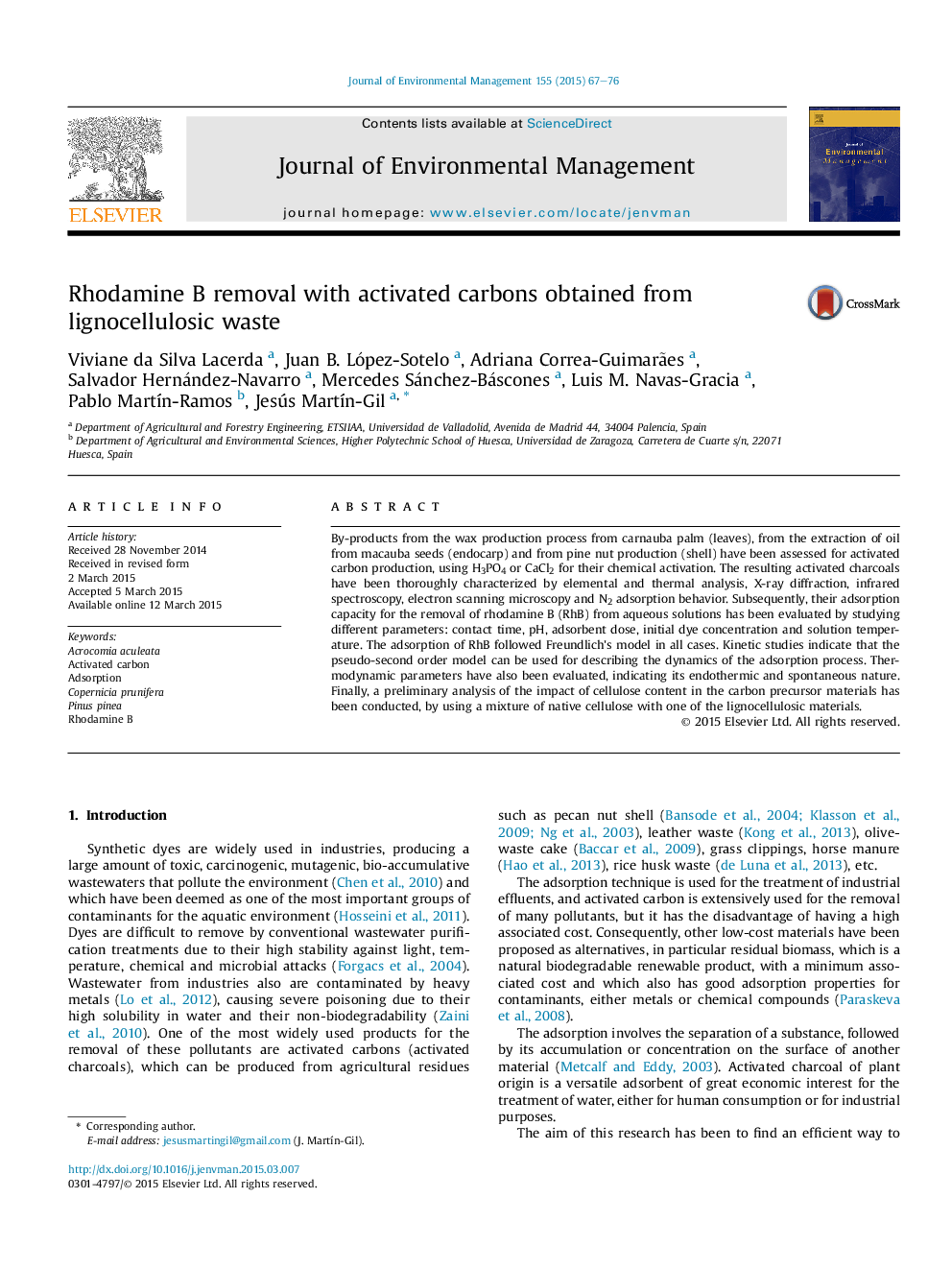| Article ID | Journal | Published Year | Pages | File Type |
|---|---|---|---|---|
| 1055599 | Journal of Environmental Management | 2015 | 10 Pages |
•Activated carbons have been obtained from carnauba, macauba and pine nut wastes.•Effect of contact time, pH, temperature, adsorbent and dye dose has been assessed.•RhB removal up to 99.85% was attained for carnauba palm leaves-based carbon.•CaCl2 activation leads to better adsorptive capacities than H3PO4 activation.•Dye removal markedly improves when cellulose content is artificially increased.
By-products from the wax production process from carnauba palm (leaves), from the extraction of oil from macauba seeds (endocarp) and from pine nut production (shell) have been assessed for activated carbon production, using H3PO4 or CaCl2 for their chemical activation. The resulting activated charcoals have been thoroughly characterized by elemental and thermal analysis, X-ray diffraction, infrared spectroscopy, electron scanning microscopy and N2 adsorption behavior. Subsequently, their adsorption capacity for the removal of rhodamine B (RhB) from aqueous solutions has been evaluated by studying different parameters: contact time, pH, adsorbent dose, initial dye concentration and solution temperature. The adsorption of RhB followed Freundlich's model in all cases. Kinetic studies indicate that the pseudo-second order model can be used for describing the dynamics of the adsorption process. Thermodynamic parameters have also been evaluated, indicating its endothermic and spontaneous nature. Finally, a preliminary analysis of the impact of cellulose content in the carbon precursor materials has been conducted, by using a mixture of native cellulose with one of the lignocellulosic materials.
